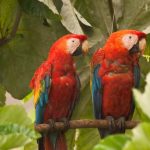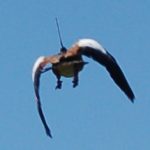← Back
Tracking blue-winged teals, an avian influenza host
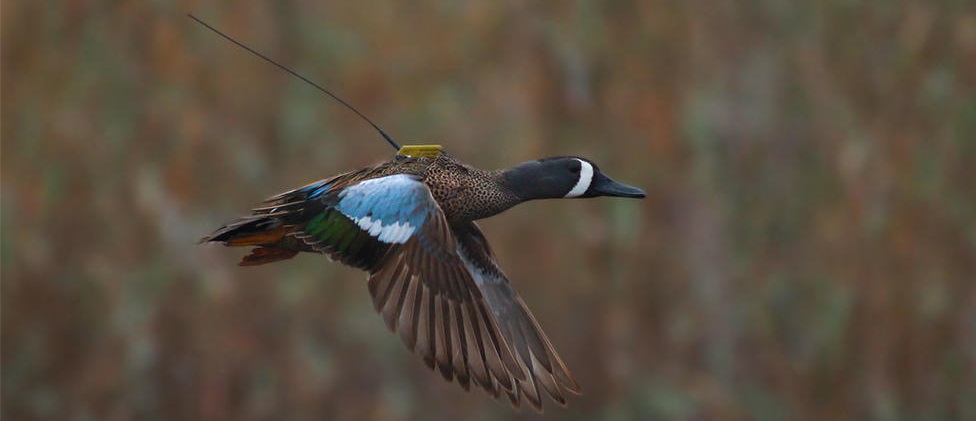
Wild migratory waterfowl such as blue-winged teals are known host of avian influenza. They can contaminate poultry which in turn develop highly contagious poultry diseases, some rare times affecting human population. Being able to monitor more closely the poultry when at risk is thus of foremost importance.
Blue-winged teals, common hosts of avian influenza
Avian influenza viruses are present all over the world. They can lead to highly contagious poultry diseases, with induced economic problems for producers, and possible food security risks. Moreover, there is also the off-chance possibility of one of those viruses going epidemic in the human population. It is thus of foremost importance to better assess the movements of their natural hosts, and the relations of these with poultry.
Blue-winged teals (Spatula discors) are migratory wild waterfowls of the duck subfamily found almost exclusively in the Americas. They are widespread, and also common hosts of Avian Influenza Viruses. Knowing the times and locations when and where blue-winged teals and poultry overlap are important to effectively monitor and manage avian influenza. The transmission to poultry can be direct (contact with wild infected animal, which means the natural hosts and the poultry are at the same place at the same moment), or indirect (through a biotic vector or virus shed in the environment. Then poultry and natural host can be at the same place at different times). Overlap is thus defined as places where natural hosts (blue-winged teals in this study) are on the ground and geographically close to poultry.
Tracking and Modeling Blue-winged teal movements
Forty-two adult blue-winged teals were captured and equipped with 9.5 g, solar-powered, Argos PTTs. Twelve were equipped on their summer range in Canada (Alberta, Saskatchewan), thirty on their wintering range along the Gulf of Mexico coast (Texas, Louisiana), South of United States.
The locations thus obtained were used to develop a model of blue-winged teal space utilization. This model was then used in link to the Avian Influenza reported outbreak in poultry facilities, to try and map the probabilities with respect to wild duck movements. Another spatial – temporal model was developed using the same tracking data, in conjunction with a model of poultry facilities locations (sometimes backyard producers with only a few chickens or turkeys, or big commercial facilities). Land cover, including surface water data, were also included.
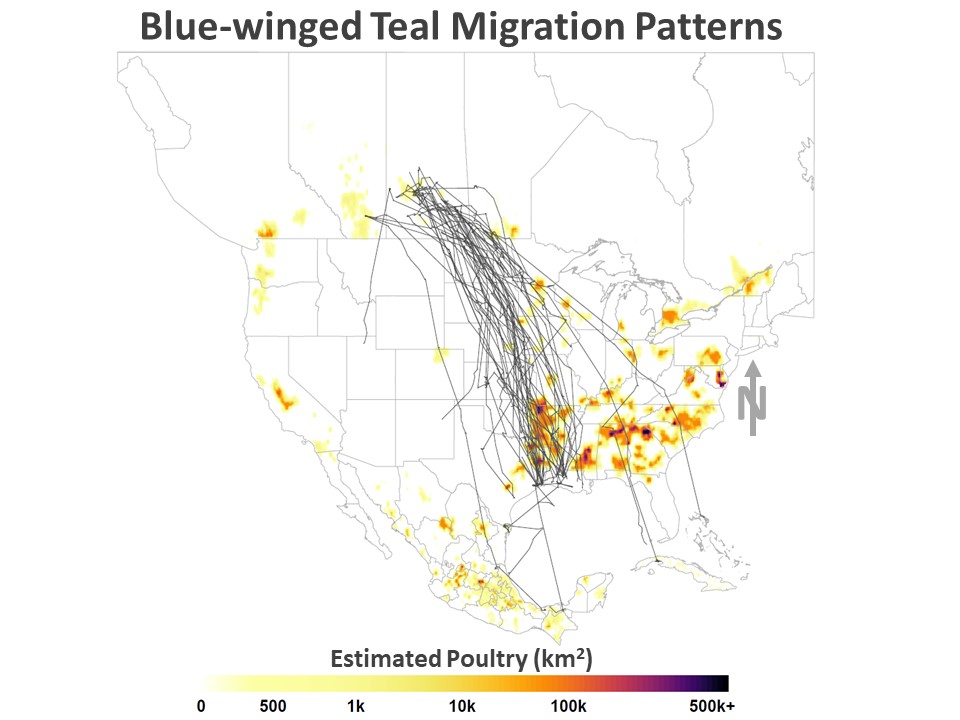
Avian influenza outbreaks & blue-winged teal space utilization
The avian influenza outbreak episodes are registered by the FAO in the web-based Global Animal Disease Information System (EMPRES-i). This database enables to compare the blue-winged teal space utilization model with the registered outbreaks. The poultry abundance in this modelling is also obtained from FAO.
Results ([Humphreys et al., 2020]) indicate that migratory waterfowl presence has an impact on avian influenza occurrence in commercial poultry within North America. All the occurrences are probably not directly linked to wild waterfowl, especially in places where the poultries are numerous and dense. But where there is a higher probability of presence, or longer residence of blue-winged teal, the risk of avian influenza outbreak increases in commercial poultries.
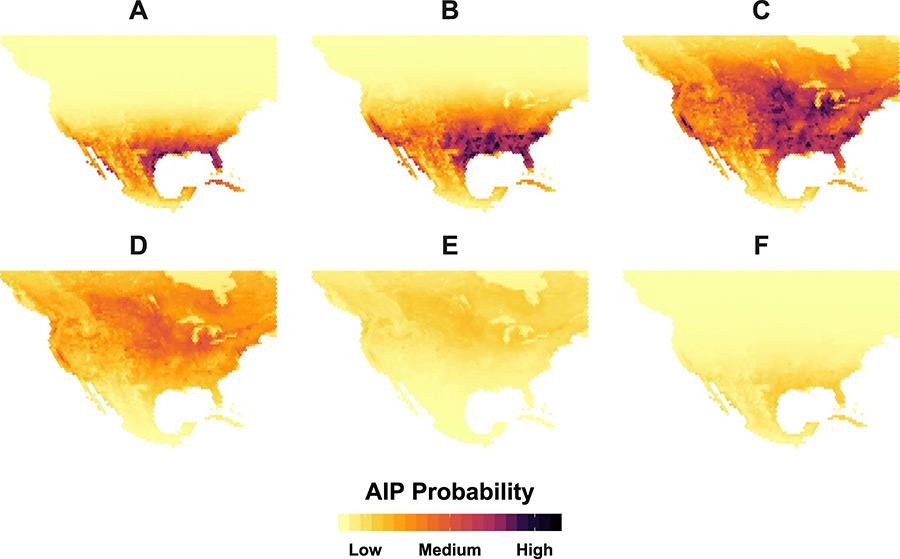
Poultry spatio-temporal colocations with blue-winged teals
To refine the analysis, a second study ([Humphreys et al., 2021]) using the same tracking has been done, with a spatial – temporal model with a model of poultry facilities locations (sometimes backyard producers with only a few chickens or turkeys, or big commercial facilities). Land cover, including surface water data, were also included. The objective was to assess the probability of wild birds overlapping poultry facilities, and thus of contaminations.
Results show that the riskier time depends on the latitude: avian influenza surveillance should be closer during spring migration south of 40°N, while further north, the fall migration is to be monitored more closely. There is a different behavior of the wild birds depending on turkeys or chickens being reared within. There is also a difference between small-scale chicken poultry and large commercial facilities – the blue-winged teals seem to favor being on the ground close to the latter.
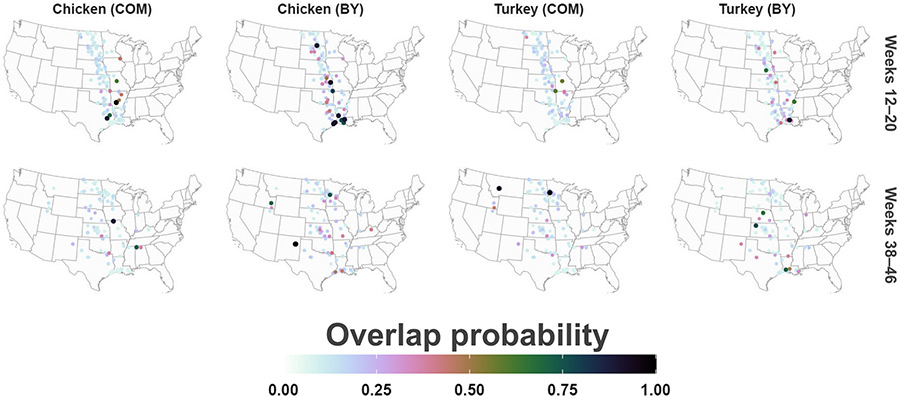
Perspectives
There is a correlation between blue-winged teals migrations and avian influenza outbreaks in poultries.
The locations and times where blue-winged teals and poultry overlaps should help in identifying the risks of avian influenza poultry outbreaks. And thus enables to establish an effective disease surveillance and response strategy. However, other migratory wild waterfowl hosts should be studied so as to encompass the whole range of risks and countermeasures.
References
- Humphreys, J.M., A.M. Ramey, D.C. Douglas, J.M. Mullinax, C. Soos, P. Link, P. Walther, D.J. Prosser, 2020: Waterfowl occurrence and residence time as indicators of H5 and H7 avian influenza in North American Poultry. Sci Rep, 10, 2592 (2020). https://doi.org/10.1038/s41598-020-59077-1
- Humphreys, J.M., D.C. Douglas, A.M. Ramey, J.M. Mullinax, C. Soos, P. Link, P. Walther, D.J. Prosser, 2021: The spatial–temporal relationship of blue-winged teal to domestic poultry: Movement state modelling of a highly mobile avian influenza host. J Appl Ecol., 58, 2040–2052 (2021). https://doi.org/10.1111/1365-2664.13963
Main Photo: a blue-winged teal with an Argos PTT (credit Jonas Bonnedahl)

